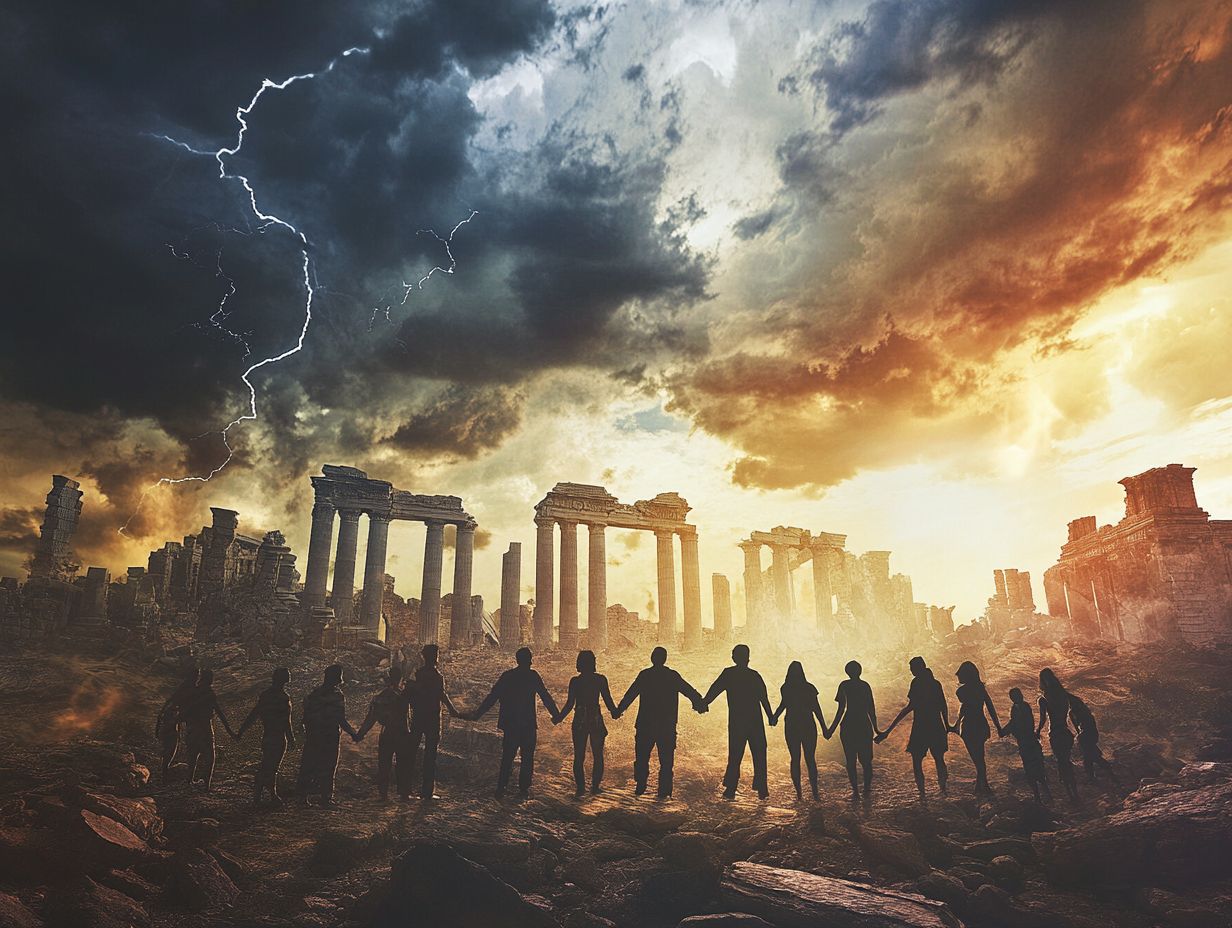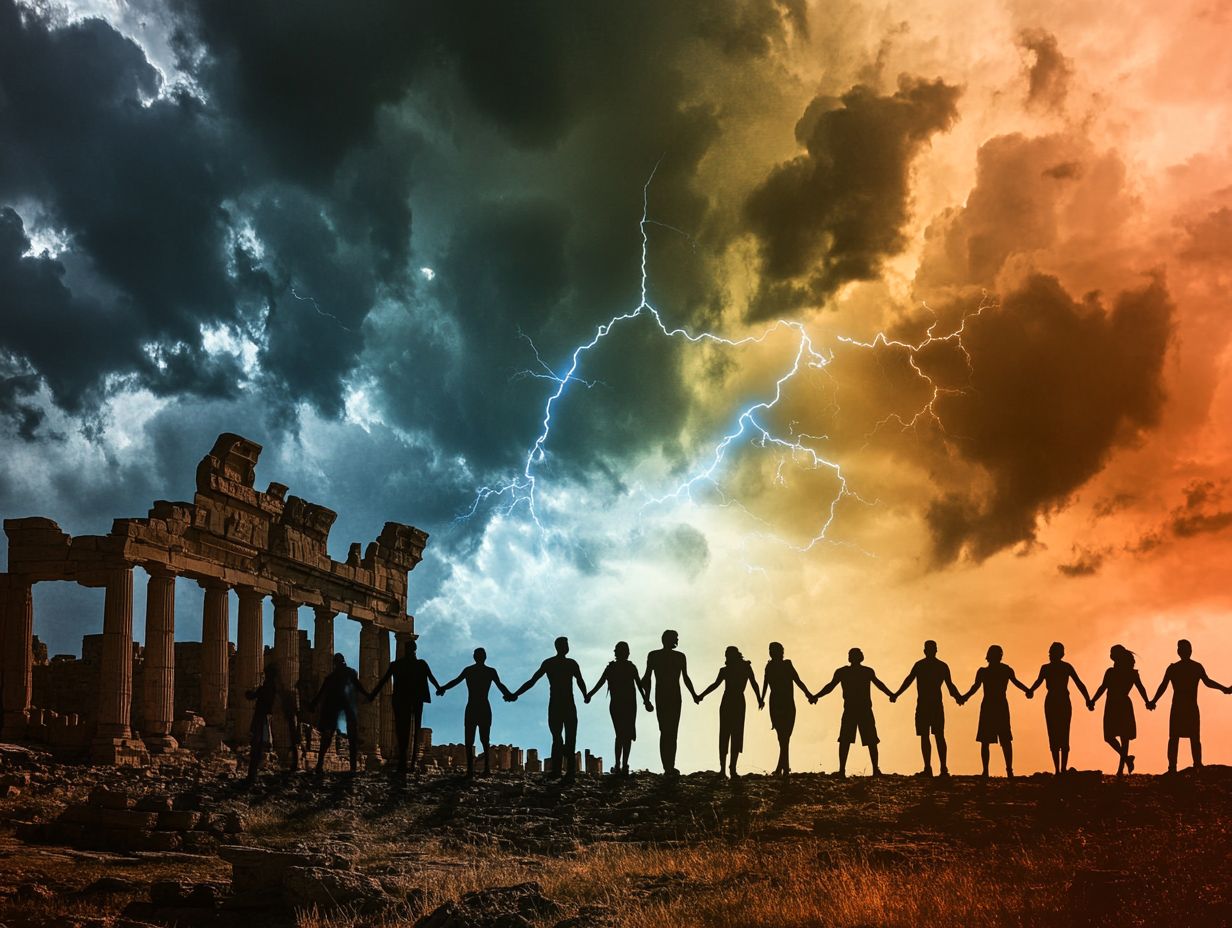Defining Doomsdays and Catastrophes

Doomsdays and catastrophes are pivotal events in human history that have significantly altered the course of past civilizations, leaving a lasting impact on cultural memory. These events encompass a wide range of disasters, including natural calamities, pandemics, economic collapses, and wars, all of which have led to societal breakdowns and the downfall of once-thriving cultures.
The study of these events through historical analysis offers crucial insights into how societies respond to existential threats and adapt their structures to ensure their survival.
Lessons from Past Civilizations
Insights from past civilizations offer valuable lessons on how societies confronted catastrophe and persevered against the odds. Historical accounts of these civilizations and their eventual decline illustrate how concepts of resilience and survival developed as essential tools and strategies that enabled cultures to endure existential threats, whether stemming from natural disasters or socio-political factors leading to their downfall.
The cultural memories of these experiences serve as a foundation for modern disaster recovery and resource management.
Examples of Catastrophes and How They Were Handled

Archaeological examples of historical disasters reveal how past civilizations responded to crises and help us understand the effectiveness of their responses. Instances such as the collapse of agrarian societies due to resource depletion, societal reactions to pandemics, and the loss of social and political cohesion are supported by archaeological evidence that sheds light on how communities managed during times of crisis.
This understanding provides a foundation for analyzing modern disaster responses and community solidarity. For instance, the Black Death of 14th-century Europe resulted in the deaths of over a third of the population, leading to significant social and labor shifts in response to the loss.
Similarly, the Mayan civilization faced prolonged droughts that devastated agriculture, prompting some cities to develop both internal and external water management systems and diversify their crops. Archaeological evidence illustrates how societies can adapt to changing conditions, highlighting their resilience as well as the often detrimental relationship between environmental stressors and societal collapse.
Strategies for Surviving Catastrophes
Surviving catastrophes involves strategies that have evolved over hundreds of years through human adaptation and experience. These strategies encompass both individual and community levels, emphasizing the significance of psychological resilience and community cohesion in overcoming disasters.
Key components of these strategies include emergency preparedness, resource management, and the acquisition of survival skills, all of which enable societies to endure and recover from catastrophic events.
Preparation and Adaptation Techniques

Preparation and adaptation techniques are essential for the survival of societies during catastrophic events, providing a framework for effective disaster preparedness. These techniques encompass a broad range of survival skills, including resource management and the utilization of technological advancements that enhance community resilience.
By learning from historical precedents, modern societies can develop and adapt their strategies to mitigate the impacts of future disasters. Historically, communities have demonstrated remarkable resourcefulness by implementing sustainable agricultural practices and water conservation techniques to address environmental challenges.
The advent of technology has further improved communication systems, established early warning systems, and enabled data analytics for appropriate responses to potential threats. For instance, innovations such as Geographic Information Systems (GIS) aid in risk assessments and planning, allowing societies to make informed decisions regarding resource allocation.
As these societies evolve, they adapt to new information and changing conditions, striving toward a new equilibrium that harmonizes human aspirations with the needs of the environment.
Implications for Modern Society
The implications of historical lessons are particularly significant in modern times due to the increasing overlap of global challenges that did not exist in previous eras. Issues such as climate change, resource depletion, and other existential threats to civilization are more interconnected than ever before.
By examining the historical responses of past civilizations to catastrophes, we can gain valuable insights into the importance of risk assessment, sustainability, and cultural resilience when confronting contemporary existential threats. This historical context serves as a foundation for effective disaster management and emergency preparedness.
Applying Historical Lessons to Current Situations

Applying historical lessons to contemporary circumstances is crucial, as societies can use this knowledge to navigate modern challenges, particularly in disaster recovery and community responses. By examining how past civilizations confronted and overcame obstacles, we can develop more effective strategies for future forecasting and prepare for known catastrophes.
Integrating ancient wisdom into modern contexts requires critical thinking and interdisciplinary studies. Understanding historical lessons is essential for grasping both the recovery process and the community dynamics involved.
For instance, the recovery process following Hurricane Katrina in 2005 underscores the significance of community involvement and resilient infrastructure in rebuilding efforts. The lessons learned from the mistakes made during this recovery can inform and enhance future efforts. A key takeaway is the necessity for open communication and clear expectations between local governments, non-profit organizations, and citizens, ensuring that all parties can collaborate effectively during crises.
Additionally, analyzing Japan’s response to the 2011 earthquake and tsunami demonstrates how preparedness drills and community engagement can significantly enhance the efficiency of resource distribution and response times in the aftermath of a disaster. Therefore, it is imperative that historical lessons are integrated into future community planning to bolster resilience.
The Role of Technology in Surviving Doomsdays
Technology plays a crucial role in the survival of societies confronted with doomsday scenarios, providing innovative solutions for disaster preparedness and response. As the world grows increasingly interconnected and complex, technology becomes essential for assessing risks, organizing resources, and coordinating emergency responses. This capability enhances society’s overall resilience in the face of existential threats.
While the future of technology remains uncertain, it is vital to recognize both its limitations and its potential in formulating effective survival strategies.
Advancements and Limitations
Technological advancements have transformed disaster management by providing tools that enhance efficient resource allocation and community engagement during emergencies. However, it is essential to understand the limitations of these technologies to ensure their optimal effectiveness in survival strategies.
Recognizing both the advantages and limitations of technology is crucial for developing comprehensive disaster management methods. The use of drones and satellite imagery has significantly improved situational awareness during natural disasters, enabling faster assessments and quicker responses.
Additionally, mobile applications facilitate real-time communication, fostering collaboration between responders and disaster-affected populations. Despite these benefits, challenges persist, such as data privacy concerns and the digital divide, which can leave vulnerable communities without access to critical information.
Furthermore, reliance on technology raises questions about the adaptability of systems in low-tech environments, underscoring the importance of integrating traditional methodologies with modern innovations to create a comprehensive disaster management system.


